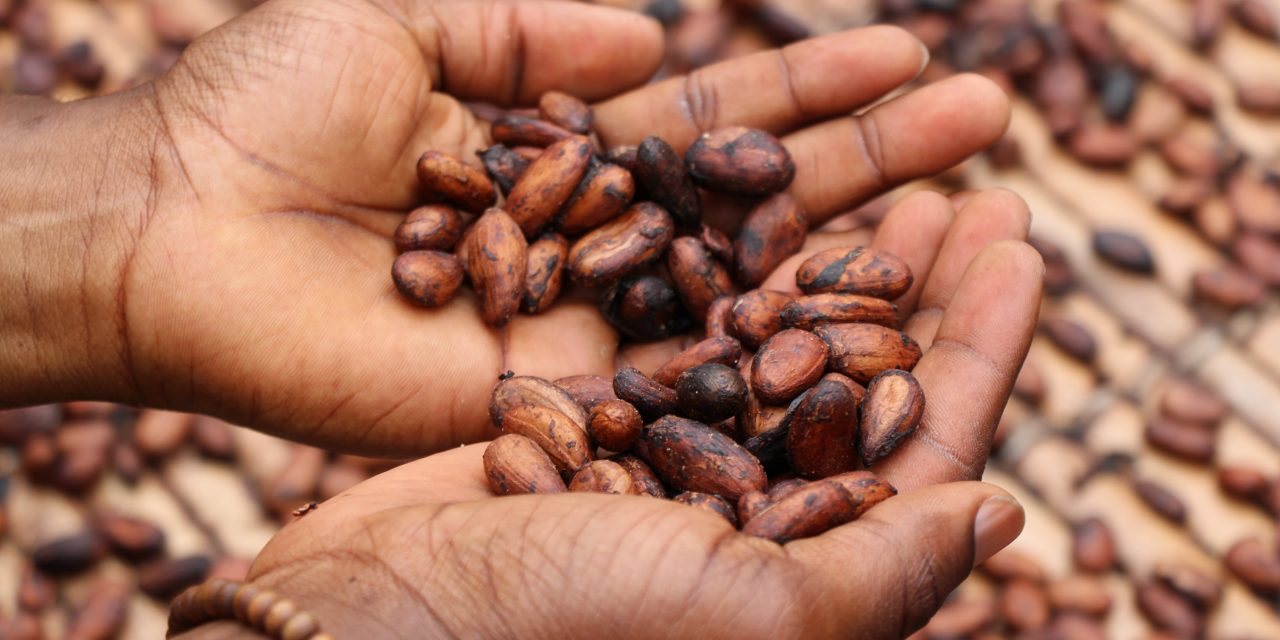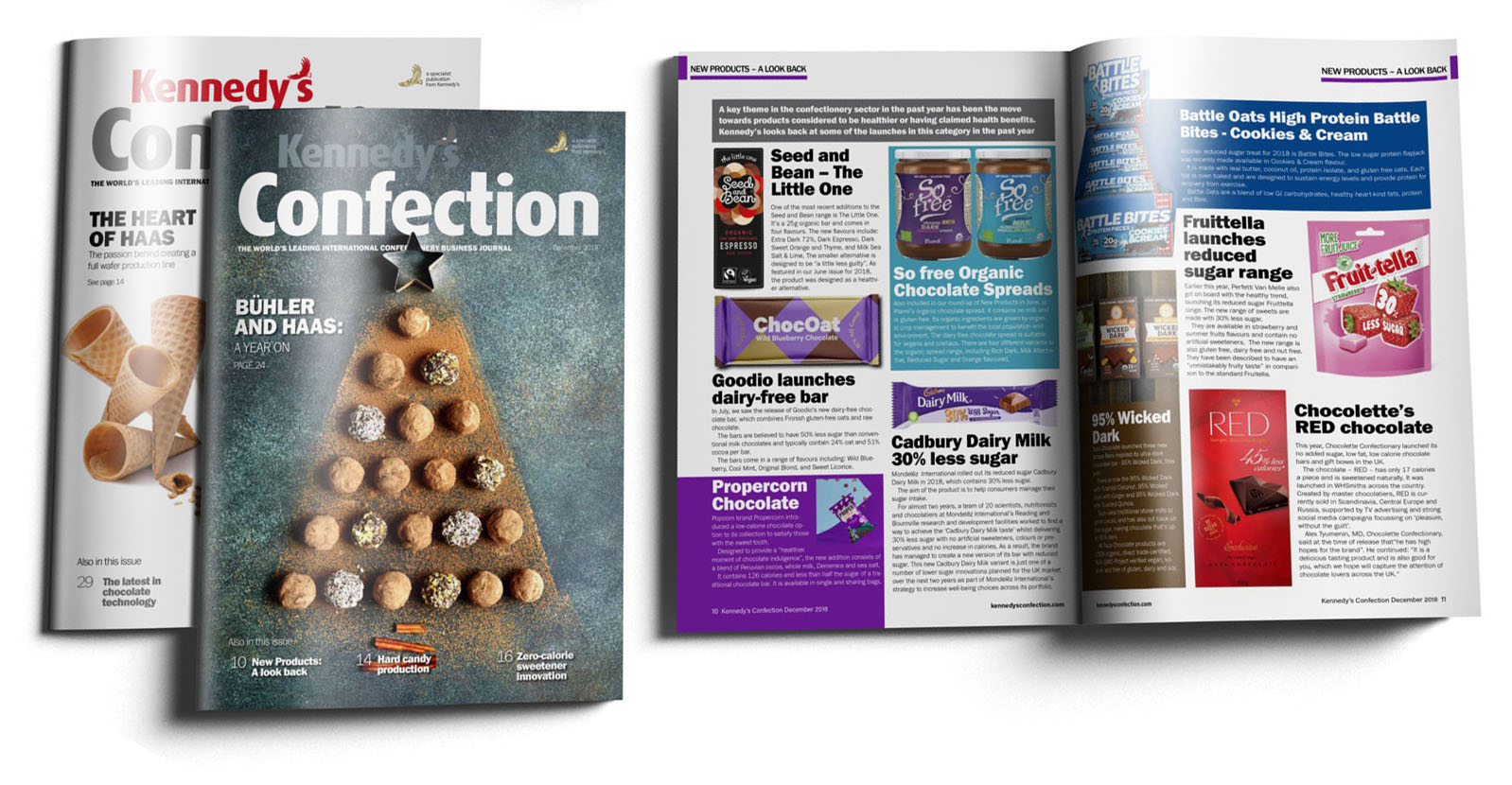Kennedy’s Confection Editor, Kiran Grewal, sits down with Nidhi Jain, commodity specialist at The Smart Cube to explore the ‘sugarflation’ phenomenon and cocoa price surge.

Can you explain the current situation with sugar prices and how the ongoing dry weather in sugar-producing regions like India and Thailand is impacting the market?
From June 2022 to June 2023, sugar prices rose by 41.9 per cent, off the back of declining production in key producing nations such as India, Thailand, and China, leading to a steep rise in sugar prices over the past few months. To describe this sharp inflation in sugar prices, a new term emerged: ‘sugarflation’.
The price hike is largely being driven by the El Niño weather phenomenon. The weather event – which began in June 2023 and brings warmer weather patterns and frequent periods of dry conditions to parts of Asia, West Africa and Australia, as well as heavy rainfall to Brazil and parts of the US – is influencing the production of numerous food and agricultural products, including sugar.
The intensity of the El-Niño-driven dry season in Asia led to three of the top five global sugar producers – India, Thailand, and China – witnessing a decline in production, which is expected to persist throughout H2 2023. Looking specifically at Thailand, sugarcane output is expected to decline 21 per cent in 2023–2024 as a result of the weather phenomenon.
The wider confectionary industry is under pressure to tackle the crisis. Small players in the confectionery market, such as bakeries and hotels, who depend on sugar as a crucial ingredient are suffering diminishing profit margins as they battle to absorb the increasing prices without passing them on to their clients.
With El Niño causing dry weather in key regions, how do you foresee the future trajectory of sugar prices and the potential effects on confectionery manufacturers?
With El Niño triggering a supply shortfall of sugar, an upward pressure on the commodity’s price is anticipated during H2 2023 and H1 2024. This shortfall is also likely to lead to the sugar market witnessing a supply deficit for the second year in a row.
Amid this probable drop in production, governments of major sugar-producing countries have taken strict actions, such as rationing and restricting exports, to protect domestic supplies. For example, India – the second largest sugar producer in the world – reduced sugar exports by 45% year-on-year (YoY) in the marketing year 2022-23.
“Confectionery manufacturers should consider using artificial intelligence (AI) as part of their business strategies to ensure profitability and maintain a regular supply of reasonably priced products for consumers”
As per the initial estimates given by Indian Sugar Mills Association (ISMA), the country is likely to produce 31.7 million tonnes of sugar during the marketing year 2023-24 – down 3.4% year-on-year (YoY) and 1.1% lower than the past five-year average. The monsoon rain in India from June to August was 10% below average, raising fears of a likely decline in the country’s sugar production, which might prompt the government to impose an exports ban.
The global sugar market will likely see a deficit of 5–6 million tonnes in the marketing year 2023-24 due to exports curbed by India and reduced acreage in Thailand, as farmers may increase sowing of more profitable cassava crops.
These short- to medium-term supply constraints are anticipated to keep sugar prices high, increasing input costs when it comes to the manufacturing of confectionery products.
Given the consecutive years of supply deficits in the sugar market, what strategies can confectionery producers adopt to mitigate the impact of rising sugar prices on their products?
To mitigate the impact of sugarflation, we have seen confectionery producers transferring the burden of increased sugar input costs to consumers. While this has resulted in CPG companies experiencing growth in their revenue, this has almost entirely come via price hikes, and not an increase in volume sold.
This can be seen with revenue growth in the first quarter of 2023, which was largely driven by price increases. In fact, some confectionery manufacturers even showed negative volume growth. For example, Nestle’s organic growth of 9.3% for the first quarter of the year was due to price growth of 9.8%, with the organisation’s sales volume declining by 0.5% during this period.
In terms of a solution which does not affect consumer prices, confectionery manufacturers ought to actively evaluate multiple suppliers and support their critical vendors. By identifying suppliers in several different geographies, this reduces the dependence on a single provider and territory, especially if a manufacturer is purchasing from areas where output is declining.
Elsewhere, businesses should conduct a comprehensive review on exposure to Indian and Thai suppliers, to ensure the fall in production in these nations doesn’t have a major impact on their operations. Mapping suppliers on a tiered basis will also help confectionery producers get a clearer picture of the supply chain risks.
The high cocoa prices are a concern for the industry. Could you delve into the factors contributing to these elevated prices, particularly the situation in Ivory Coast and Ghana?
In July, London cocoa prices touched £2,858/tonne, representing a 46-year high. A major factor in contributing to these elevated prices is tight cocoa supplies in Ghana and Ivory Coast – two of the world’s leading cocoa producers.
Abundant rains in certain regions of West Africa from May to July resulted in an outbreak of the black pod disease in cocoa plantations, negatively impacting crop quality and production. The heavy rainfall has also created logistical challenges, obstructing roads and preventing goods from reaching ports in the region. In fact, cocoa arrivals at ports in Ivory Coast fell by 2.9% YoY from October 2022 to 30th July 2023.
What’s more, the quality of cocoa beans has been impacted by the continued sanctions imposed on Russia – the largest fertiliser exporter globally. The lack of availability of fertilisers and pesticides has affected crop quality, limiting cocoa production.
The black pod disease outbreak in cocoa plantations has affected crop quality and production. How are these challenges compounding the existing supply issues and cocoa price increases?
Supply from West Africa has been dwindling since the start of 2023 due to hot and dry weather in the first quarter of 2023.
Rainfall in May brought some relief, but this also brought on logistical problems, adding to the outbreak of the swollen shoot virus in Ivory Coast and the black pod disease in Ghana. As a result, despite earlier expectations of an increase, Ghana’s cocoa harvest is now anticipated to decline annually in the marketing year 2023-24.
Lower-than-expected production has prompted Ghana to postpone Q3 2023 shipment to the next season, while Ivory Coast halted forward sales of cocoa for exports during the marketing year 2023-24.
El Niño weather risks could also hinder production in these regions, and the deficit for the current and the next cocoa seasons could be larger than anticipated, keeping prices high.
What steps could cocoa producers and chocolate manufacturers take to safeguard their supply chains against disruptions caused by factors like disease outbreaks and adverse weather conditions?
In order to prevent supply chain disruptions during such events, cocoa producers and chocolate manufacturers must adopt a multipronged strategy to address low production and exports. Firstly, supply chain teams should identify and evaluate multiple suppliers and support their critical vendors. They should avoid being too reliant on a single provider and territory, particularly when a manufacturer is purchasing from areas where cocoa output is declining.
Secondly, it is imperative to monitor disease outbreaks and adverse weather conditions as they evolve. Looking at El Niño, businesses must continue tracking its progress and frequently assess the potential consequences the weather event may have on key geographies and suppliers.
Lastly, supply chain professionals ought to improve inventory and labour planning to mitigate the impact of potential disease- and weather-related disruptions. This requires carrying out detailed assessments to gauge the necessary levels of inventory, as well as ensuring that the required inventories are in place in the event supply chains are disrupted due to low production from exporting regions.
As a commodity specialist, could you elaborate on the relationship between macroclimate phenomena like El Niño and the trends in both sugar and cocoa markets?
Macroclimate phenomena tend to have a negative effect on a variety of crops, but El Niño has had a pronounced impact on sugar and cocoa markets due to the resulting weather conditions in major sugar- and cocoa-producing regions. For example, hot and dry conditions in parts of West Africa is projected to reduce cocoa output. Whereas, in Brazil, El Niño is set to cause heavy rainfall, thereby delaying the sugarcane crop harvest. This will contribute to an increase in sugar prices globally.
The intensity of the ongoing El Niño dry season in other regions this year could result in a 10–15% reduction in sugarcane yield globally. It is likely to cause India and Thailand to experience hotter- and drier-than-average weather, leading to severe drought which will reduce sugarcane production.
During previous iterations of El Niño, the weather phenomenon has had a significant impact on both the sugar and cocoa markets, negatively affecting output. Prior to this year, the most recent occurrence of El Niño was in 2015, when heavy rainfall in Brazil disrupted the sugarcane harvest and decreased sugar output. Due to the wet weather, sugarcane processing in May 2015 was 26% lower compared to May 2014, while sugar and ethanol production declined by 36% and 22% respectively. This led to the sugar market witnessing a deficit of 4.7 million metric tonnes in 2015. Meanwhile cocoa prices rallied to 12-year highs in 2016 after the weather event caused a drought in key producing countries, hampering global production.
Given your expertise, how do you see the interaction between the ongoing sugar supply deficit and the challenges in cocoa production affecting the broader confectionery industry and consumer prices?
From chocolate bars to a packet of sweets, both sugar and cocoa comprise key ingredients in the production of confectionery products. Therefore, the commodity price increases will impact input costs of confectionery products, leading to a rise in the cost of the product for end-consumers. For example, sugar accounts for approximately 7% of the total raw material cost in a chocolate muffin, with cocoa’s cost share estimated to be around 20%. As such, the product’s price is likely to increase considerably due to the rising cost of the key ingredients used to make it.
With the occurrence of El Niño likely leading to a much lower supply of key food ingredients, prices are due to increase during the last quarter of 2023 and the first quarter of 2024. This means that bakery and confectionery products, which require sugar and cocoa, are set to bear the brunt of low production and firm prices of ingredients.
Are there any innovative approaches or best practices that food producers can adopt to manage cost fluctuations in their supply chains, specifically when dealing with the current situation of rising input costs?
One innovative approach that food producers have started to adopt in order to deal with rising input costs is reducing how much of a commodity they use when it comes to making their products.
Taking sugar as an example, firms are actively working on technologies that reduce sugar content in ingredients. This can be seen with Nestle recently introducing a sugar reduction technology which, through an enzymatic process, reduces intrinsic sugar in malt, milk and fruit juice ingredients by up to 30%.
In terms of practical solutions, can you provide insights into how confectionery manufacturers can adapt their business strategies to maintain profitability and ensure a steady supply of affordable products for consumers during times of ingredient price increases?
Confectionery manufacturers should consider using artificial intelligence (AI) as part of their business strategies to ensure profitability and maintain a regular supply of reasonably priced products for consumers.
One of the main functions confectionery producers can use AI to assist with is vendor selection. The technology helps firms to analyse vendor information and determine which vendor would be the best fit for their organisation based on factors including price, quality and delivery times.
Additionally, AI tools can help identify potential risks such as supplier fraud, contract non-compliance, and supply chain disruptions. This means that during times of ingredient price increases, confectionery manufacturers can take proactive measures to ensure both their profitability and the price consumers have to pay for their products are unaffected.
When AI is used well, confectionery manufacturers can increase efficiency and dedicate more time to activities which cannot be automated, and which require some form of emotional and human intelligence (HI).
Editorial contact:
Editor: Kiran Grewal kgrewal@kennedys.co.uk







